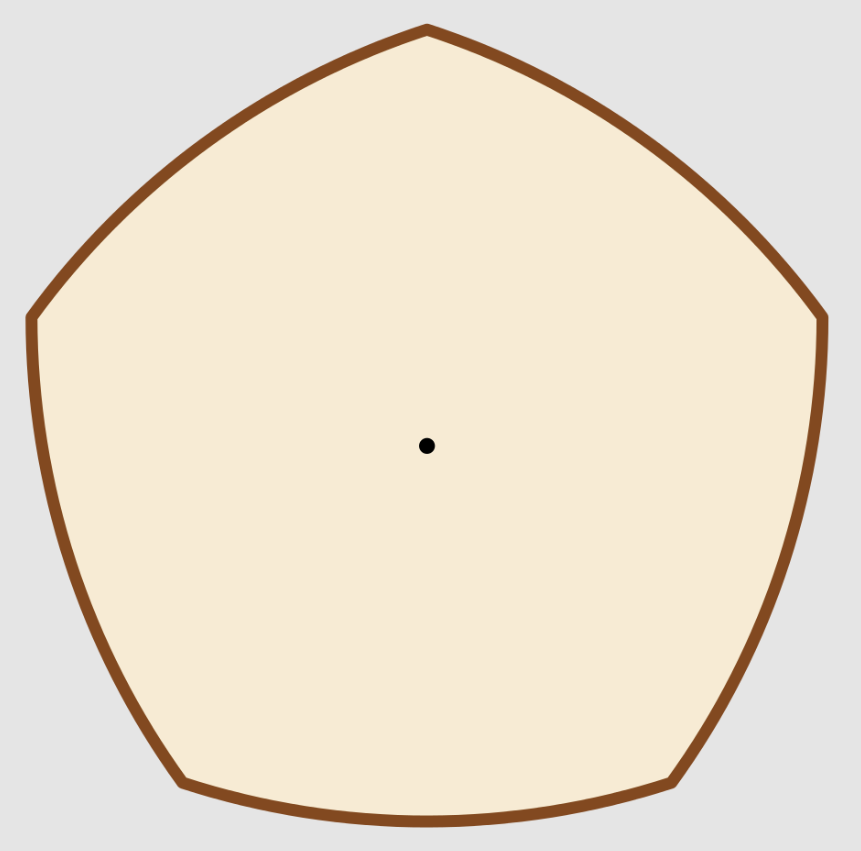Related: Draw A Reuleaux Triangle!, Draw a regular polygon
A Reuleaux polygon is a curve of constant width made up of circular arcs of constant radius. The most well-known Reuleaux polygon is the Reuleaux triangle, which has three sides1. In this challenge, you will be tasked to draw a regular Reuleaux polygon of a given number of sides.
A Reuleaux polygon is constructed by taking a polygon and replacing each of its sides with an arc centered at the opposite vertex.
This sort of shape can only be constructed from a polygon with an odd number of sides, so your input will be an odd number greater than or equal to three.
| Reuleaux triangle (3 sides) | Reuleaux pentagon (5 sides) | Reuleaux heptagon (7 sides) |
|---|---|---|
 |
 |
 |
 |
 |
 |
The circles in the first row are shown to demonstrate the construction; Your program's output should be closer to that of the second row (though the center mark is optional.)
Given an odd number ≥ 3 and, optionally, an arc radius, draw a regular Reuleaux polygon with that many sides. If you do not take an arc radius as input, ensure that the image is at a high enough resolution that the curves can be deciphered.
This is code-golf; the shortest solution in each language wins.
1 A curve can't have "sides" by the standard definition where each side is a line, but for the purposes of this task I am using the term "side" everywhere for simplicity.



